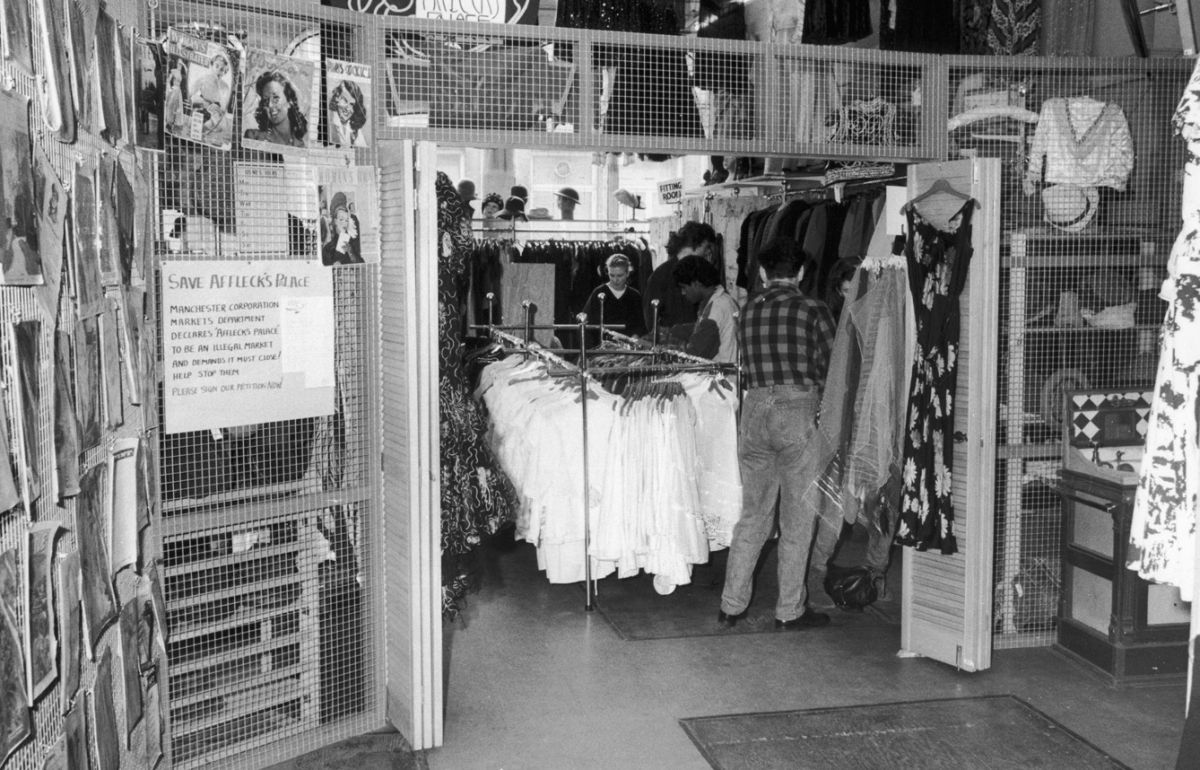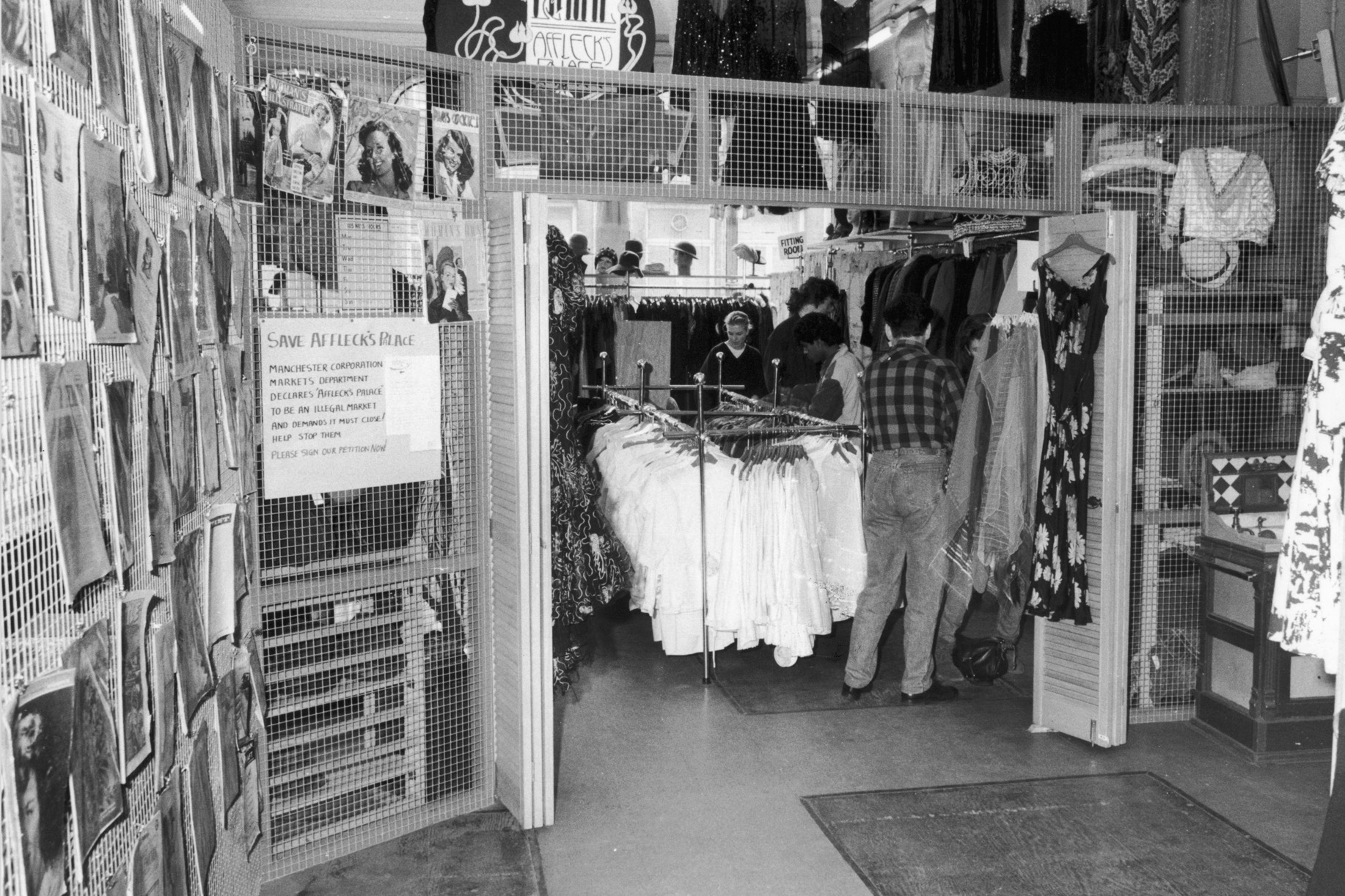The proud city of Manchester has no shortage of strong associations to ground-breaking music and subcultural style. Iconic local bands and artists such as The Smiths, Joy Division, New Order, A Guy Called Gerald, Happy Mondays, The Fall and The Stone Roses have, since the late-70s and post-punk 80s, long-lingered in the public’s hearts, influencing the listening habits and wardrobe contents of successive generations of musicians and fans. Similarly, Manchester’s homegrown and best-known record label and nightclub of yesteryear - Factory Records and The Hacienda, respectively – have subsequently attained near-mythical status around the world.
No less enduring or affectionately regarded by Mancunians and visitors to the city from far and wide is the unique style mecca known as Afflecks, located in the Northern Quarter district. This vast, four-storey, red-brick building has consistently offered a bold contrast to mainstream fashion outlets, addressing the aesthetic nuances of every alternative style tribe across the past four decades, since launching as Affleck’s Palace, in 1982.
Located at the junction of Dale Street, Tib Street, Church Street and Oldham Street, the building had originally housed a drapery business, Affleck & Brown, way back in the 1860s, which morphed into a traditional department store of the same name, finally closing down in 1973 after customers had gradually dwindled. By 1982, John and Elaine Walsh bravely leased the rather shabby premises and offered it up to an array of young, creative entrepreneurs who could rent modest-sized units in which to launch their fledgling businesses. The template was similar to that of London’s Kensington Market on Kensington High Street, or The Great Gear Market on the King’s Road in Chelsea (both now gone, due to redevelopment), though it offered a better deal to its tenants, with low-cost rents, payable weekly, and scope to terminate the tenancy with only a week’s notice, should a business venture prove to be unsuccessful. Such favourable terms enabled a uniquely spontaneous and experimental attitude to retail, which persists successfully to this day within Afflecks.


